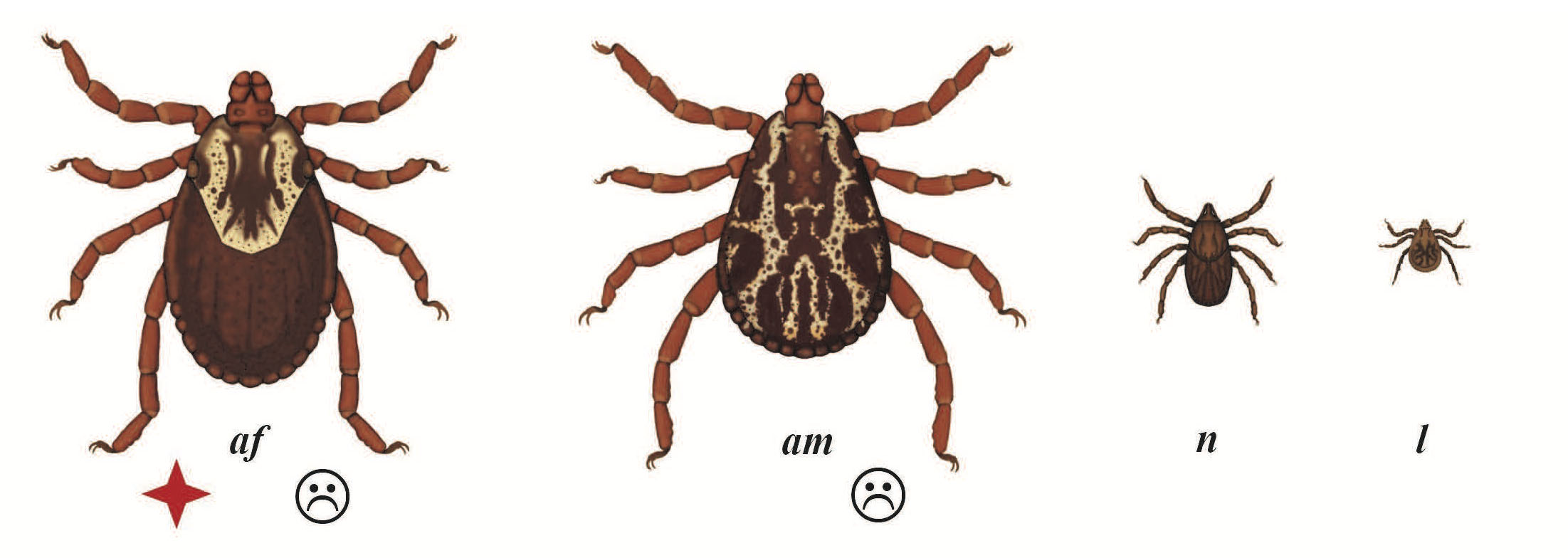
Among the 16 tick species in Virginia, only three species commonly bite people.
How do I identify a tick?
The information below may be helpful in identifying which species of tick you have and which life stage it may be. You can also send your tick to VDH for help with identification!
If you start to become sick after a tick bite, a tick identification can help your doctor determine what tick disease you may have gotten, and provide the best treatment for your illness.
You can send your tick to VDH through the tick survey program: Virginia Tick Survey

American Dog Tick
The American Dog Tick can be found throughout Virginia and can carry Rocky Mountain Spotted Fever, which affects humans and dogs. The adult females (af) can be identified by their off-white patterned scutum (“shield” that is on their back), just behind their head, and the dark brown color of their body.

Blacklegged Tick
The Blacklegged Tick, often called the “deer tick”, is a tick of major public health importance for Lyme Disease in Virginia and the Eastern U.S. The male ticks are dark brown or black in color and resemble a small watermelon seed. The females are red-brown behind their black scutum (shield) that is just behind their head (on the tick’s back).

Lone Star Tick
The Lone Star Tick can be found throughout Virginia but usually lives in areas below 1,600 ft. in elevation. This tick is an aggressive biter and has the potential to transmit serious diseases such as Ehrlichiosis and Rocky Mountain Spotted Fever. The adult female is best recognized by a white dot, or “lone star,” on the center of her back.

Asian Longhorned Tick
The Asian Longhorned Tick (also known as a Bush Tick or Cattle Tick) is native to East Asia and has only recently [May 2017] been identified in the United States. It is unknown how long this tick has been in the U.S.
Opens pdf to download
Opens document to download
Opens in a new window
External link will open in new window. Click link to exit Virginia Department of Health Website.
